Ever heard of blue & red bananas? Well, don’t be surprised, but there is SO MUCH you don’t know! You might also think all varieties are edible bananas, but there is more to that, we’ll tell you.
The world of bananas is, well, bananas! There are more banana plant types than you think. Luckily, we know much about banana plants, trees, and fruits! Heck, we knew about this way before anyone else did.
AsterGardening has had years of experience with bananas and berries, and it’s going to be all yours now.
Get ready to know some mesmerizing unique types of banana plants you will be surprised even exist!
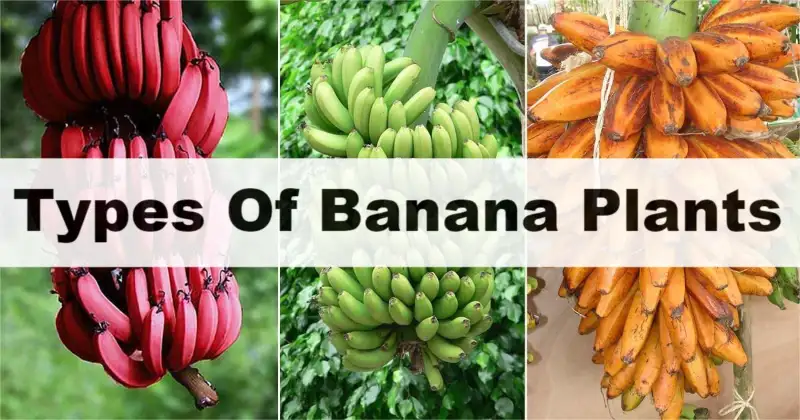
How many types of bananas are there?

When you ask this question in your head, you know the only bananas that pop out are the yellow bananas. You might think there are just small and big bananas. That’s it, right? Well, get ready to be BAMBOOZLED!
No, we’re not calling you a baboon because you don’t know the types of bananas.
There are over a 1000 VARIETIES! Can you believe it?
But the most widespread type grown and consumed is the Cavendish bananas. They are small to medium-sized with a sweet flavor. Another common variety is the Gros Michel banana. This variety, however, was largely wiped out by the Panama disease.
But don’t worry; there are still so MANY VARIETIES that you can try out. Let’s go through the top ten varieties.
Top 10 Types of Bananas
1. Lady Finger

The Lady Finger. No, not the vegetable, the banana fruit! These cuties are also known as “Baby Bananas” or “Finger Bananas.” Look how CUTE they are!
Imagine how cute they must look on a lady-finger banana tree. They are small, with thin skin, and about half the size of a regular banana.
They might even be smaller, they’re just cute like that. The baby banana has a rich creamy texture. They’re sweet with hints of vanilla, just like you are! Though they’re small, they pack a heavy punch of vitamin C, potassium, and of course, fiber.
If your children have trouble eating bananas, they won’t be able to keep their hands off them.
2. Blue Java
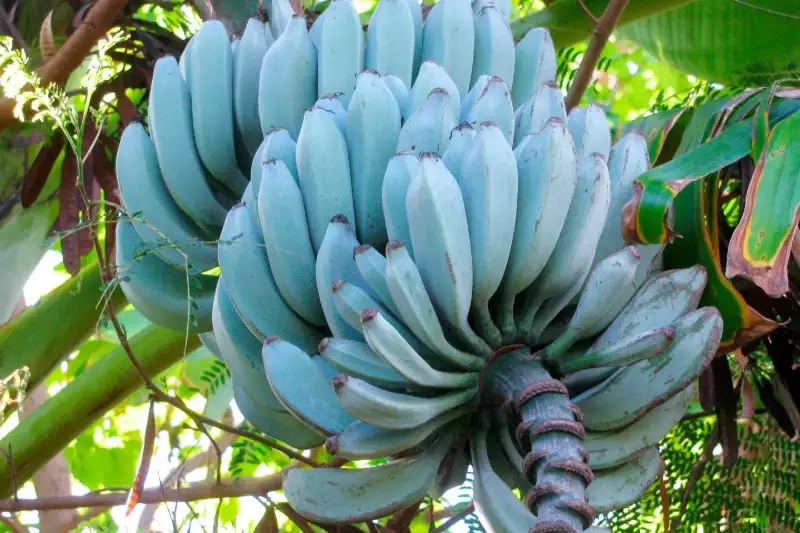
You won’t BELIEVE this! These are blue bananas! The name gives it out, but still, it’s hard to wrap your head around it, right? The blue java banana is a rare commodity, mainly because they are native to Southeast Asia.
This breed has been imported from the movie called Avatar! Interesting, aren’t they? Well, they most certainly are tasty too. They have a creamy taste with almost a custard-like texture. Their flavor is said to resemble vanilla ice cream!
Don’t you want to get this ice cream banana in a bowl and see how the flavors EXPLODE in your mouth?
3. Plantains
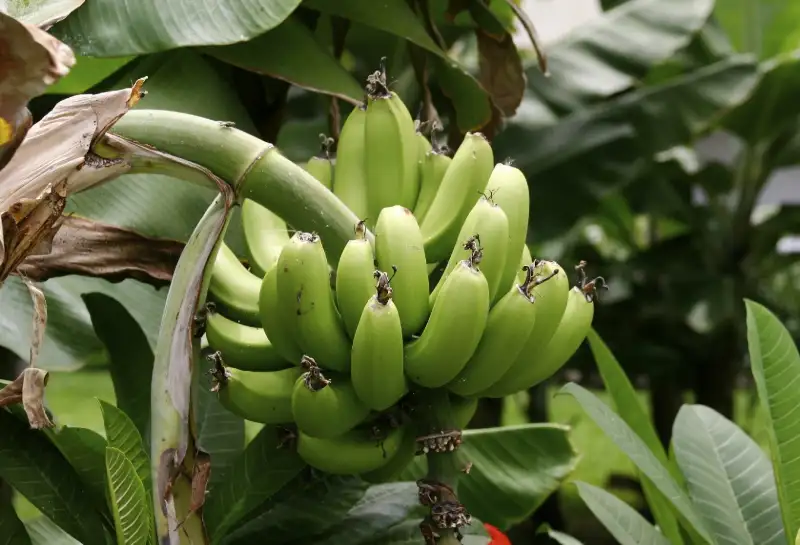
The first thing you would notice about this banana is that it’s larger than your regular ones. It’s even thicker skin (doesn’t mean it has no emotions!) and is often green or yellow-brown.
The largest producers of Plantains(also known as fe’i bananas) are in African countries: Uganda, Ghana, and Nigeria. This type is super popular in Caribbean and Latin American cuisines.
You must have seen in movies that when they show scenes from the Caribbean, one thing you notice is, ‘how big are those bananas’! Well, those are Plantains. They are an excellent source of fiber, vitamins, and minerals.
4. Musa Velutina
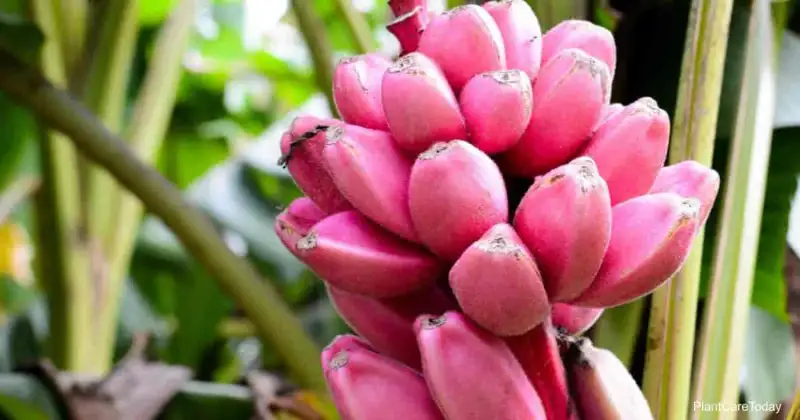
What a fancy name, right? This wild banana is native to India and Southeast Asia. The special thing about them is that this is a red banana! Strange right? Well, they’re fabulous!
Generally, you’d expect a long tall banana tree growing bananas. But this one grows on a comparatively smaller plant. These aren’t typically consumed by humans, even though they are sweet and creamy.
This is mostly an ornamental banana which is sometimes used in traditional medicine. They aren’t eaten because their banana seeds are too many compared to their sweet flesh. Pink banana, who would’ve imagined!
5. Abaca
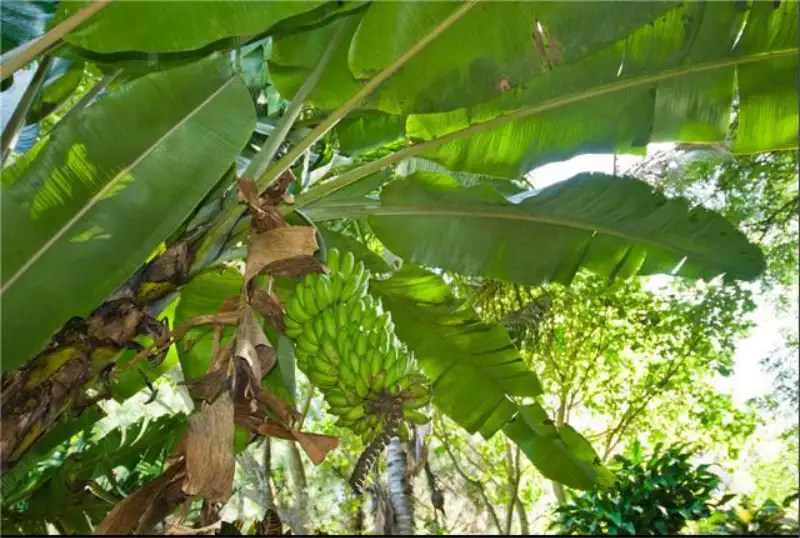
Bananas are more useful than you thought. Of course, eating is your main priority when it comes to bananas. But the Abaca is used for making a variety of products. Abaca, also known as Manila hemp, is grown for its fantastic strong fiber.
The plant is native to the Philippines, and they grow it to make paper, rope, and textiles. Now isn’t that COOL!
The fruit mostly remains neglected (it’s not sad though) as the commercial use is mostly for paper and rope. This has been their purpose for decades now. So if you’re looking for a rope, try getting one made with Abaca.
6. Cavendish
You’re pretty familiar with the yellow banana you’ve been eating all your life! We’ll tell you something that you don’t know about this variety. Hold on to your horses because this information is bananas!
This variety is named after Sir Henry Cavendish, who introduced the plant in the UK in the 1830s. Imagine a whole fruit named after you!
It also has a smaller variety. That is the Dwarf Cavendish banana, a variety of the Musa acuminata Cavendish. Their specialty is that they are great at battling diseases, and that’s why banana cultivars prefer to grow them.
7. Goldfinger
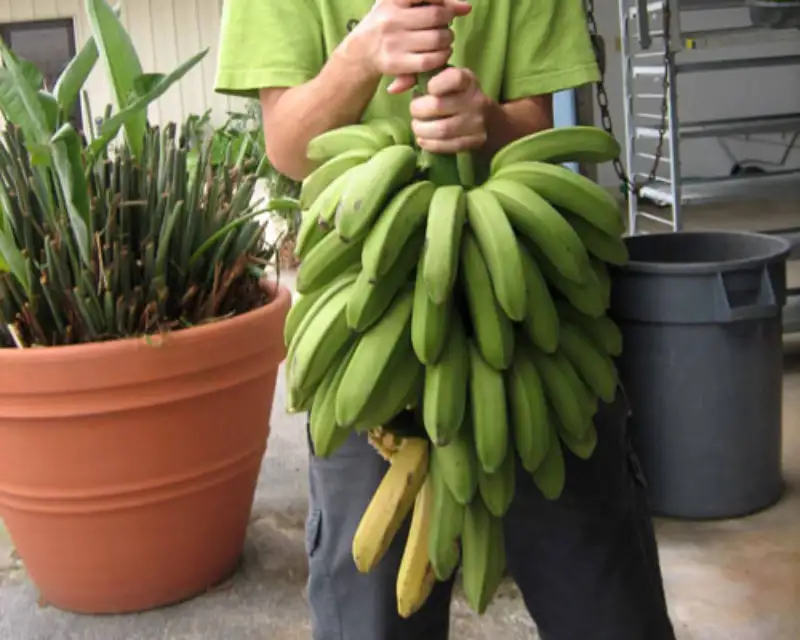
The world of banana fruits is still blooming. The Goldfinger banana is a relatively new variety developed in the 1990s. Their banana trees grow as resistant to the Panama disease. This is of utmost importance when we consider what bananas grow commercially.
They are also resistant to Black Sigatoka. Commercial growers look out for this, too, before considering a banana species.
Commercial growers are looking towards genetically modified bananas now more than ever. They don’t want to produce bananas that are susceptible to disease.
8. Musa Muluensis
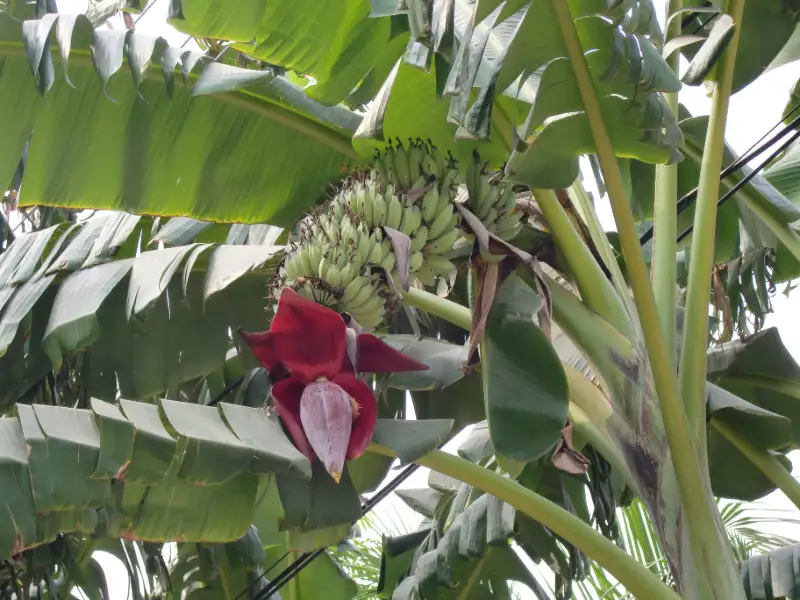
Other banana plants can’t compare to this one. Most banana trees just grow bananas and you don’t notice too much about them, but this one produces prominent flowers.
You better get ready for decorations because this one is fabulous. Apart from its beauty, the plant is used for various purposes like medicine and cosmetics.
The humongous red banana flowers and peculiar banana leaves set this one apart from its cousins. With this banana tree, you won’t wait for it to produce fruit, but you’d want to see that flower blossom. They are simply gorgeous.
9. Orinoco
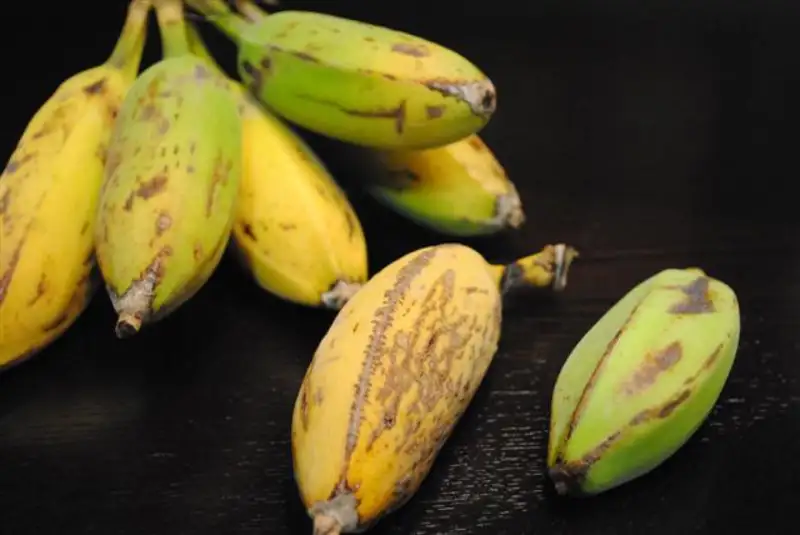
This variety of banana plants is known for their roughness and toughness as they are disease resistant. The plant is native to the Amazon region in South America, now you understand why it’s tough!
The Orinoco is known for its hardy nature (But it’s a banana, so don’t be mean!). They are among the favorites for home gardeners and small-scale farmers. They can tolerate a range of soil types (But they won’t grow on Mars).
They can also power through drought and various temperate climates. These tropical plants are something to look up to, as they grow around 15 feet tall!
10. Red Bananas

Look at these gorgeous red bananas. They’re not red with anger, but with beauty and elegance. They are a rare kind, exactly why you haven’t seen them around till now.
Who would’ve thought there were such wide banana varieties? Well, these ones are available year-round at specialty markets. Red bananas are like your traditional bananas, you simply remove the banana, peel them and eat them.
FAQs about Types Of Banana Plants
1. What is the most popular type of banana?
Cavendish Banana is the most favorite type(Not yours after this blog perhaps). They account for a whopping 47% of the production of all bananas. This is a major portion of fruit, having more than 1000 varieties.
2. What color banana is the healthiest?
Their color doesn’t directly correlate with their nutritional value. However, some research suggests that yellow bananas are the healthiest. This explains why they are the most grown and used as dessert bananas.
3. Can you eat a raw banana?
You can eat raw bananas (they taste weird though), but they are generally cooked in various ways. Generally, people fry, roast, or bake raw bananas before eating them raw.
4. Which banana plant is not edible?
One example of a non-edible banana plant is the ornamental banana. The name suggests that it’s purely decorative. They’re grown for their attractive foliage and don’t produce edible fruit.
What’s Next
This was your lesson from the banana encyclopedia. Now you’re aware of more banana plant types, and it’s always fun to chat about them with your friends. Whenever you come across a banana now, you know it has more cousins and varieties than just this one.
So keep an eye out, and maybe try growing a colorful banana yourself! Just be careful not to eat the ones which aren’t edible.
Now you can do a banana split in two ways, literally. As you’ve explored the banana world with AsterGardening, we would love for you to read some more. The fruit and vegetable world is vast, and you’ll always keep learning.
So learn with us, and read more of our articles. Share this one with your friends and bamboozle them with the fact that there are more banana types than they thought.
